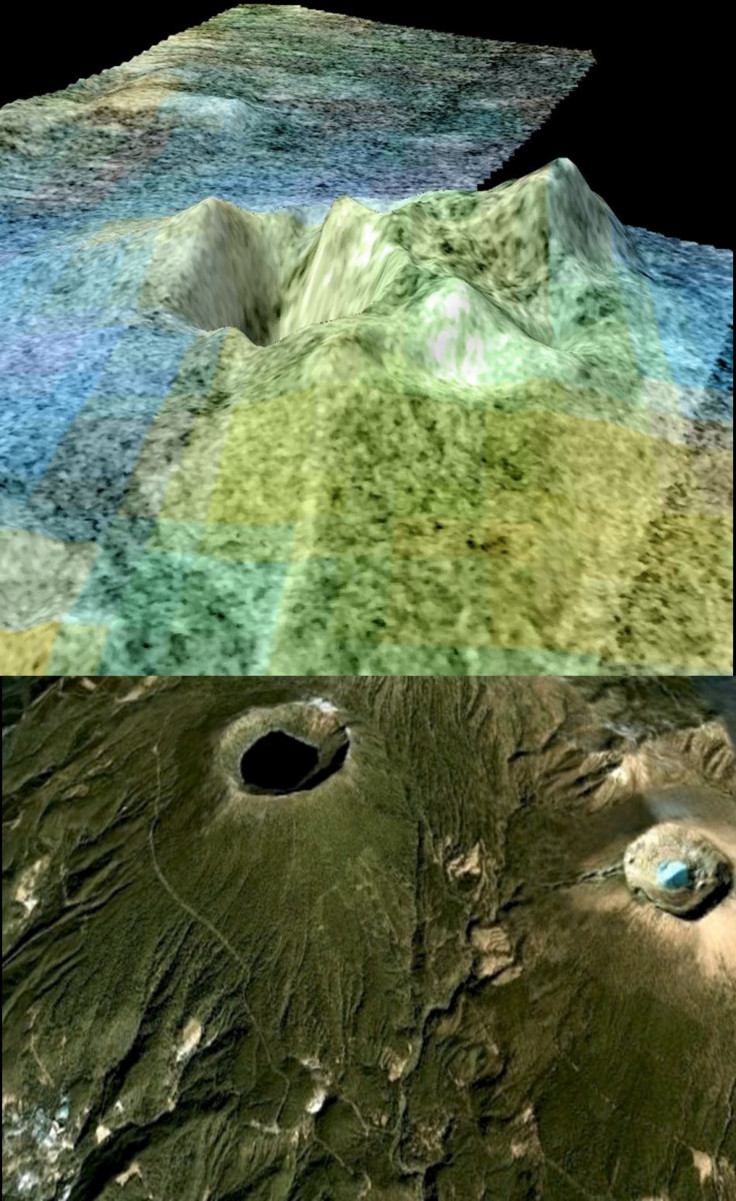Saturn’s Moon Titan May Have Active Ice Volcanoes, Cryovolcanic Areas 'Could Harbor Conditions Favorable For Life'
Based on new data collected by NASA’s Cassini spacecraft, Titan, Saturn’s largest moon, may have active ice volcanoes. The researchers analyzed surface brightness data captured by Cassini and discovered changes that would indicate active cryovolcanism on Titan.

Anezina Solomonido, from the Observatoire de Paris and National and Kapodistrian University of Athens, presented the research at the European Planetary Science Congress (EPSC) 2013. Interestingly, the active ice volcanoes on Titan could make certain areas of the moon more suitable for life. “These results have important implications for Titan’s potential to support life as these cryovolcanic areas might contain environments that could harbor conditions favorable for life,” said Solomonido in a statement.
The study analyzed three locations near Titan’s equator, Tui Regio, Hotei Regio and Sotra Patera, for potential ice volcano activity, comparing those locations with similar volcanic regions found on Earth, examining features such as calderas, a feature caused by the collapse of land after an eruption and volcanic craters.
According to the researchers, Titan has many features that can be found on Earth, including dunes, lakes, weathering erosion as well as clouds and rain of liquid methane, instead of water. Titan’s surface is covered by a thick layer of ice, but underneath that ice there is an ocean of liquid water, although it may contain ammonia. Solomindo says Titan needs to have a mechanism to replenish methane.
Methane is important in the search for life as it is one of the four components, along with water vapor, carbon dioxide and oxygen, which astronomers look for to determine a planet’s, or moon’s, potential to sustain life, reports Universe Today. There are organisms on Earth, such as methanotrophic bacteria, that convert methane into energy. Unlike a volcano eruption on Earth, a cryovolcano, or ice volcano, eruption ejects methane.
Researchers, using Cassini’s onboard Visual and Infrared Mapping Spectrometer (VIMS), discovered brightness changes for two regions, Tui Regio and Sotra Patera. Tui Regio decreased in brightness between 2005 and 2009, but Sotra Patera had an increase in brightness between 2005 and 2006. Sotra Patera, formerly known as Sotra Facula, has been previously pegged as an ice volcano by NASA in 2010 as the area features two peaks, potential volcanic craters and flows. “When we look at our new 3-D map of Sotra Facula on Titan, we are struck by its resemblance to volcanoes like Mt. Etna in Italy, Laki in Iceland and even some small volcanic cones and flows near my hometown of Flagstaff,” said Randolph Kirk, from the U.S. Geological Survey Astrogeology Science Center in Arizona, in a statement.
The only known ice volcano is found on Neptune’s moon Triton. The cryovolcano was observed by Voyager 2 in 1989.
© Copyright IBTimes 2024. All rights reserved.






















